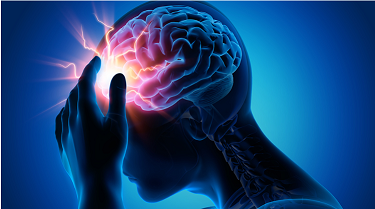31 Mar Concussion Part 1 – The Injury

Though the return to winter sport is exciting for most, it also means a number of players are going to experience injuries of some form or another. These includes concussions. A concussion is defined as an injury to the brain that temporally affects brain function. It is diagnosed through the combination of a history of a knock to the head or body, and the occurrence of certain signs and symptoms.
Signs are what we see – a dazed look, poor balance, poor coordination and memory.
Symptoms are what they report – headaches, dizziness, nausea, poor vision.
Probably the most important part of concussion management is recognition. As it is a disturbance to brain function, the athlete probably won’t recognise they are injured, or they may even vehemently deny there is any issue. Luckily you don’t need to be an expert and be able to diagnose a concussion. All you need to do is recognise a possible concussion has occurred.
When a concussion is suspected, the player should be removed from the field immediately, and not be allowed to return to play that day – even if they appear to recover. This is because symptoms may be delayed in appearing for up to 48 hours after the injury. Though there is some debate, it has been reported a second knock on top of the first can have devastating consequences.
The player should always be assessed by a medical doctor, as some knocks may result in a head injury – that is a significant physical trauma to the brain, usually in the form of a bleed. These are life threatening injuries.
Following a concussion, or suspected concussion, the player should be monitored regularly by a responsible person. This is to assess for any major deterioration of the condition, which may be in the form of a noticeable increase in any of their symptoms, especially vomiting, decreased consciousness or increasing headaches. Should any of these occur seek medical attention immediately.
They also should refrain from screen time, driving and drinking alcohol (think about the common signs and symptoms of alcohol and concussion). Monitoring the player will also be harder if the cause of the symptoms is unclear.
There is a lot of “Fake News” out there regarding concussions.
1. “You need to be knocked out” – in the vast majority of concussions this doesn’t occur.
2. “You need to have a head knock” – any jarring to the body can bounce the brain around in your skull causing a concussion.
3. “Headgear helps” – headgear is only useful for protecting against cuts and bruises to the scalp.
There is also a lot of discussion with regard to the effect of mouth guards. Firstly, a mouth guard will protect your teeth and jaw, but only if it is correctly fitting and not cut down. As it decreases the forces through the jaw it is theoretically possible that it will reduce the likelihood of a concussion – but this is hard to prove.


Sorry, the comment form is closed at this time.